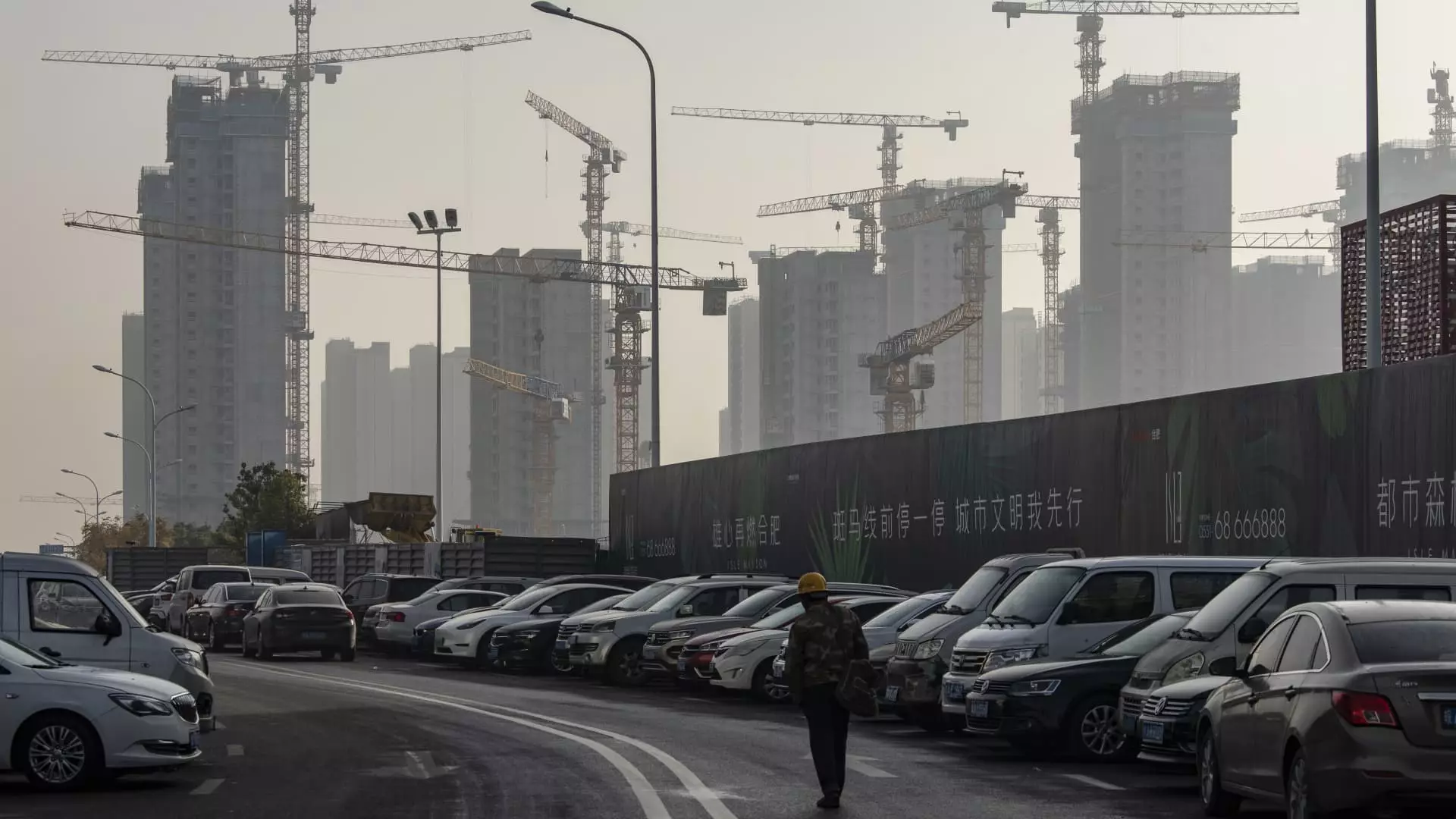China’s real estate market finds itself in a critical period, characterized by a prolonged downturn that has left analysts questioning the timeline for recovery. Recent predictions from major research firms indicate that a turnaround may not occur until mid-2025, despite ongoing government initiatives designed to stimulate the sector. These measures, although promising, may not be sufficient to reverse a trend that has seen property prices tumble significantly and consumer sentiment wane.
The Chinese government, under President Xi Jinping, has taken significant steps in recent months to combat this downward trajectory. In late September, Xi spearheaded a high-level meeting aimed at addressing the real estate crisis and halting its decline. Following that, the Ministry of Finance implemented additional stabilization measures, marking a shift toward a more coordinated approach to support developers and purchasers alike.
Goldman Sachs, in a report from October 22, espoused optimism regarding the timing of these measures. Analysts argued that the situation has reached an “inflection point” due to the recent comprehensive easing strategies being distinct from the previous piecemeal efforts. The firm’s forecasts suggest that while property prices may stabilize by late 2025 with a modest increase thereafter, significant improvements in property sales and new construction activity could take until 2027 to manifest.
The reports from S&P Global Ratings and Morgan Stanley echoed this sentiment, predicting a market bottom around the second half of 2025. Analysts from S&P noted that sustained government support for developer financing and inventory reduction could lead to stabilization in property sales and prices. However, they also emphasized that time is needed for these policies to take effect, underlining the complexities of the current economic landscape.
The Economic Impact: Real Estate’s Role in China’s GDP
The importance of the real estate sector to China’s overall economy cannot be overstated. Historically, real estate has accounted for over a quarter of the nation’s GDP and is deeply intertwined with household wealth and local government funding. The current predicament is exacerbated by the fact that many of China’s developers are heavily indebted, leading to significant delays in delivering pre-sold homes, ultimately dampening consumer confidence.
As the government seeks to balance support for the real estate sector with initiatives aimed at boosting advanced manufacturing, the challenges multiply. The strained relationship between high household debt and declining purchasing power means that consumers remain hesitant, opting instead to hold onto their savings rather than invest in what has become a volatile market.
The anticipated recovery relies heavily on the prospect of substantial fiscal stimulus, with Goldman suggesting an additional 8 trillion yuan ($1.12 trillion) to be earmarked for real estate support. This would necessitate a robust strategy to alleviate developers’ liquidity problems, reduce unsold inventories, and ensure timely delivery of homes to buyers. Without such stimulus, Goldman warns, the property market’s decline could extend for another three years—a disquieting prospect in an already strained economic environment.
The challenge lies not only in the amount of support needed but also in its execution. Past attempts to bolster the market were met with varying degrees of success, and the situation demands a more cohesive and focused strategy to inspire confidence among buyers and investors alike.
Consumer Confidence and Market Sentiment
Despite the gloomy forecasts, there has been some recent indication that confidence may be stabilizing slightly, as evidenced by a decrease in the rate of decline of property sales in major cities. Property sales had dropped approximately 4% year-on-year in October, a marked improvement from the more than 25% plunge observed in September. However, this does not equate to an unequivocal recovery; many analysts maintain that any rebound in sales or new construction will likely remain tepid in the years to come.
S&P forecasts that property sales will fall to around 9 trillion yuan this year, possibly dipping further to as low as 8 trillion yuan by 2025—less than half the level achieved in 2021. With substantial unsold inventories, developers are resorting to price cuts, further straining their financial viability while potential buyers remain wary.
The future of China’s real estate sector largely hinges on the efficacy of the government’s response and the extent of market recovery in the coming months. Goldman analysts caution that without substantial policy backing, property prices might drop an additional 20% to 25%. The limited support measures announced so far, including a 300 billion yuan relending loan facility for unsold homes designated for conversion into affordable housing, only cover a fraction of homes needing attention.
While there is cautious optimism regarding recovery within China’s real estate market, the path forward is fraught with challenges that require decisive action and strategic planning. The next couple of years will be critical in determining whether the sector can rebound or if it will continue to struggle under the weight of unsold properties and dwindling consumer confidence.

